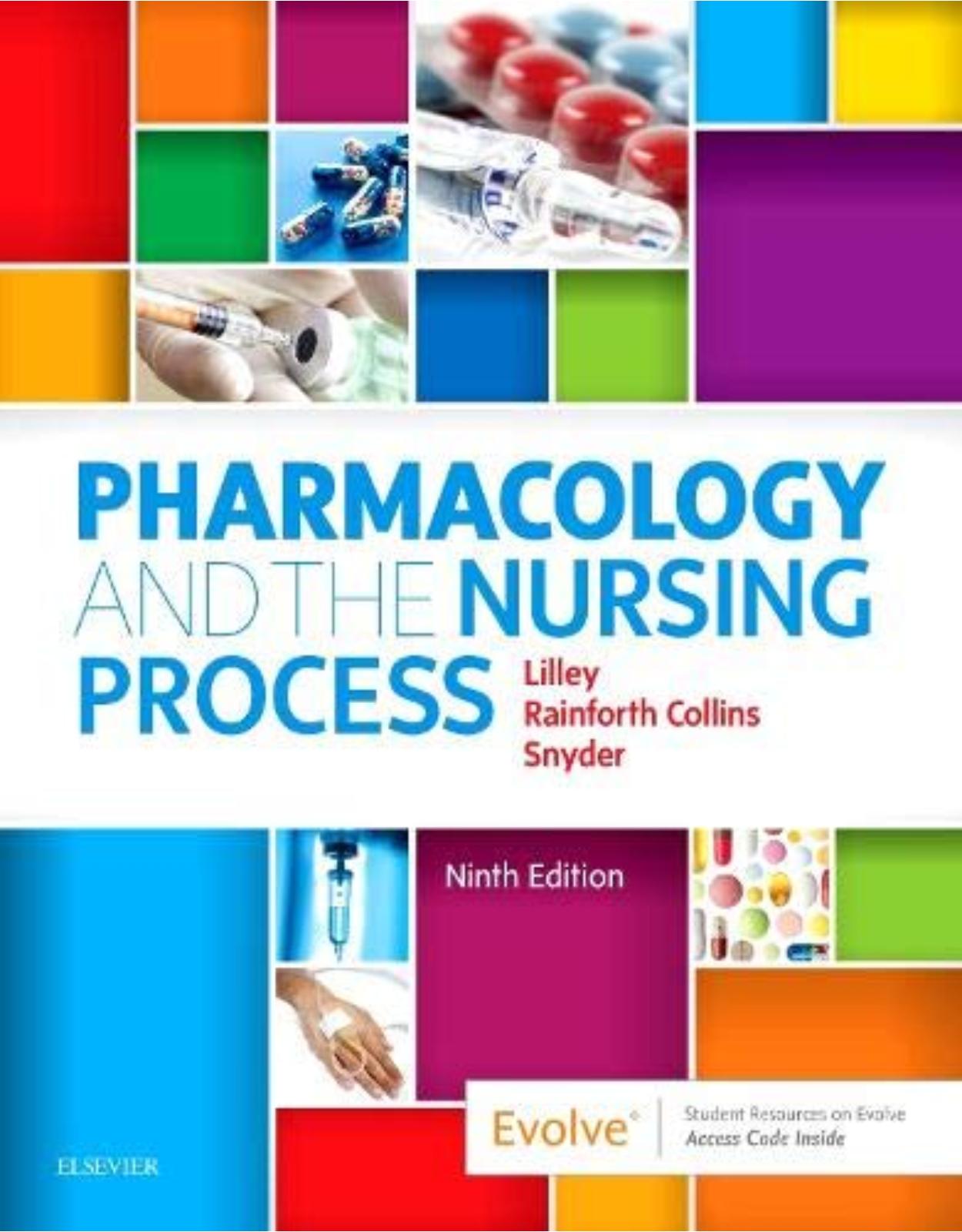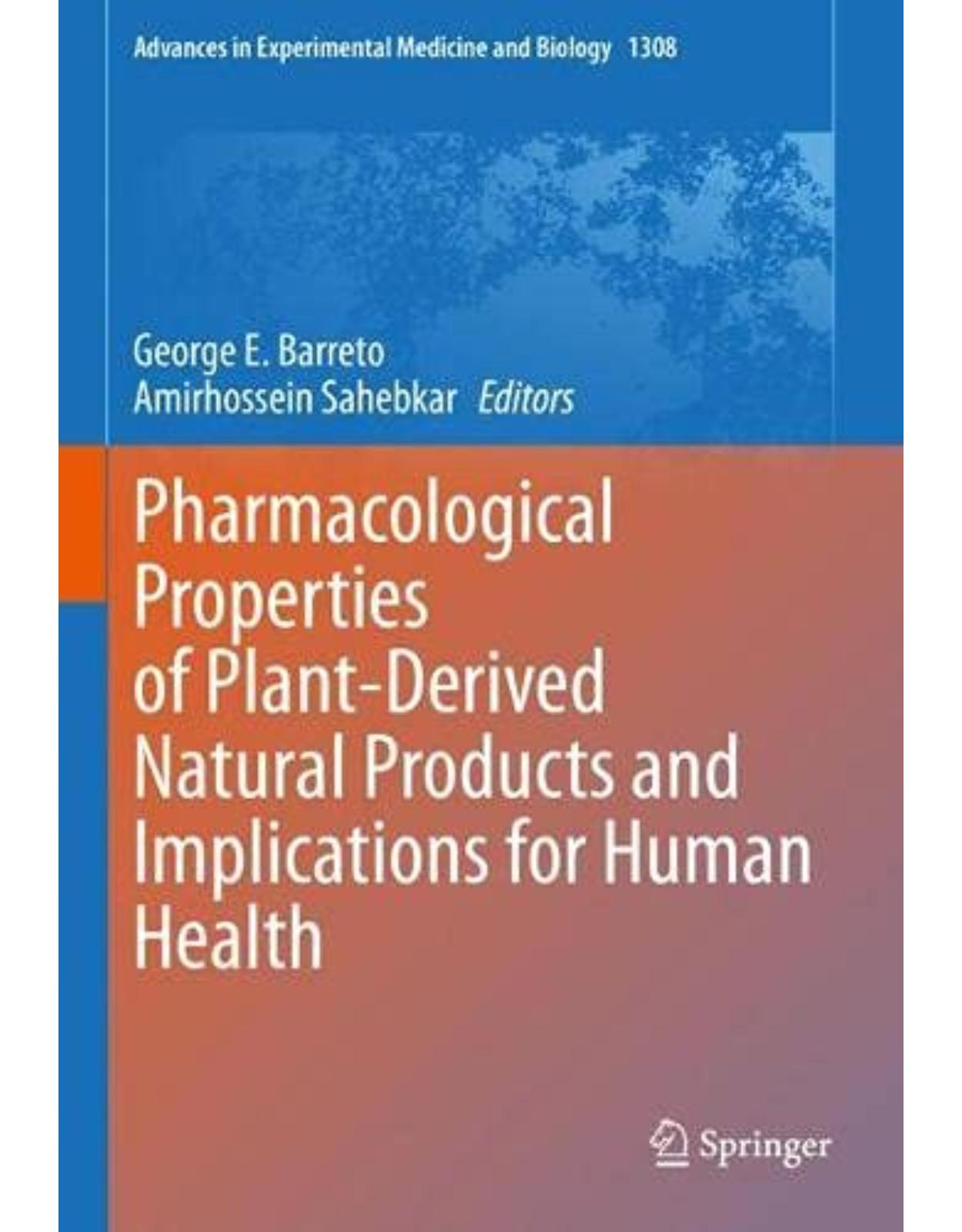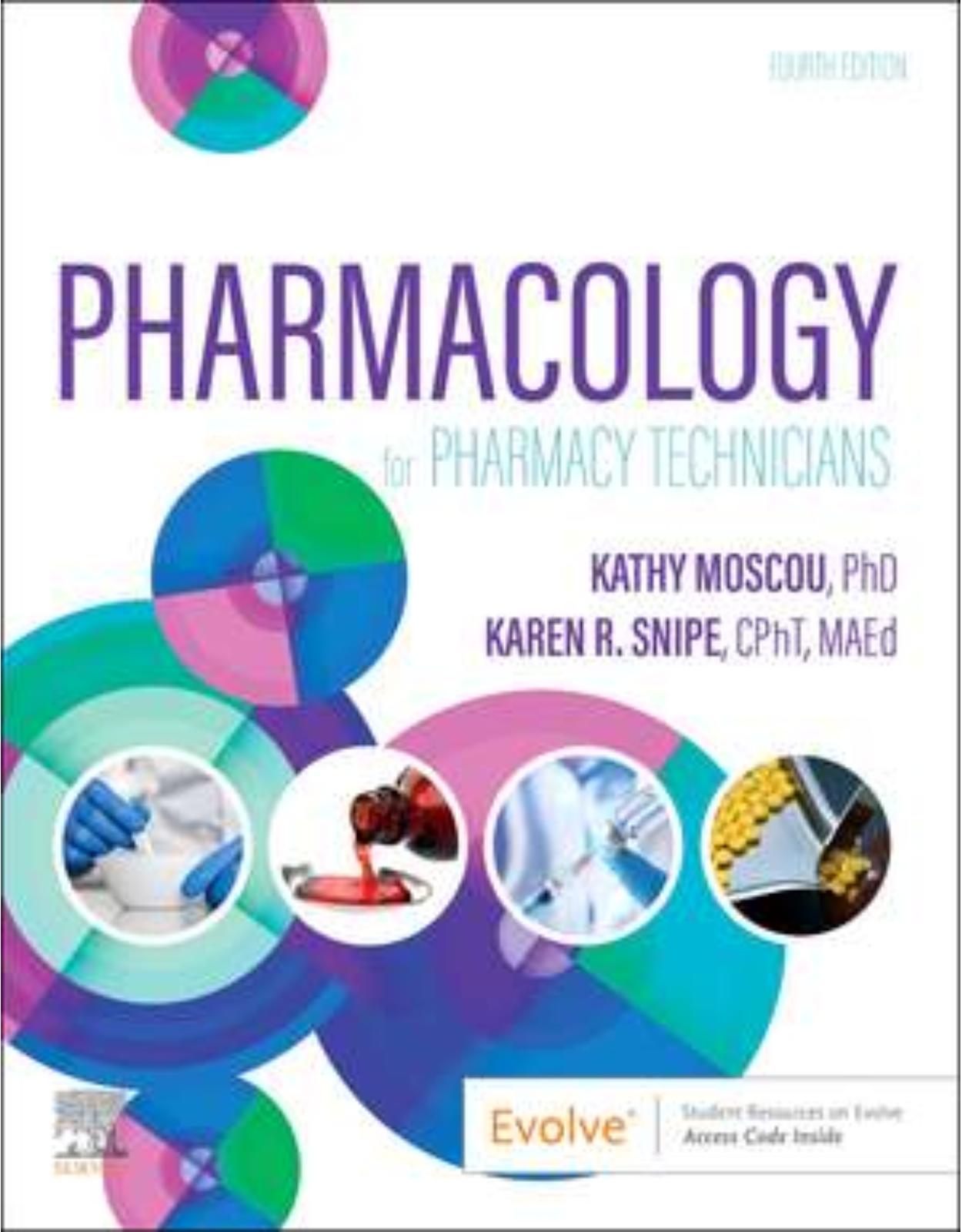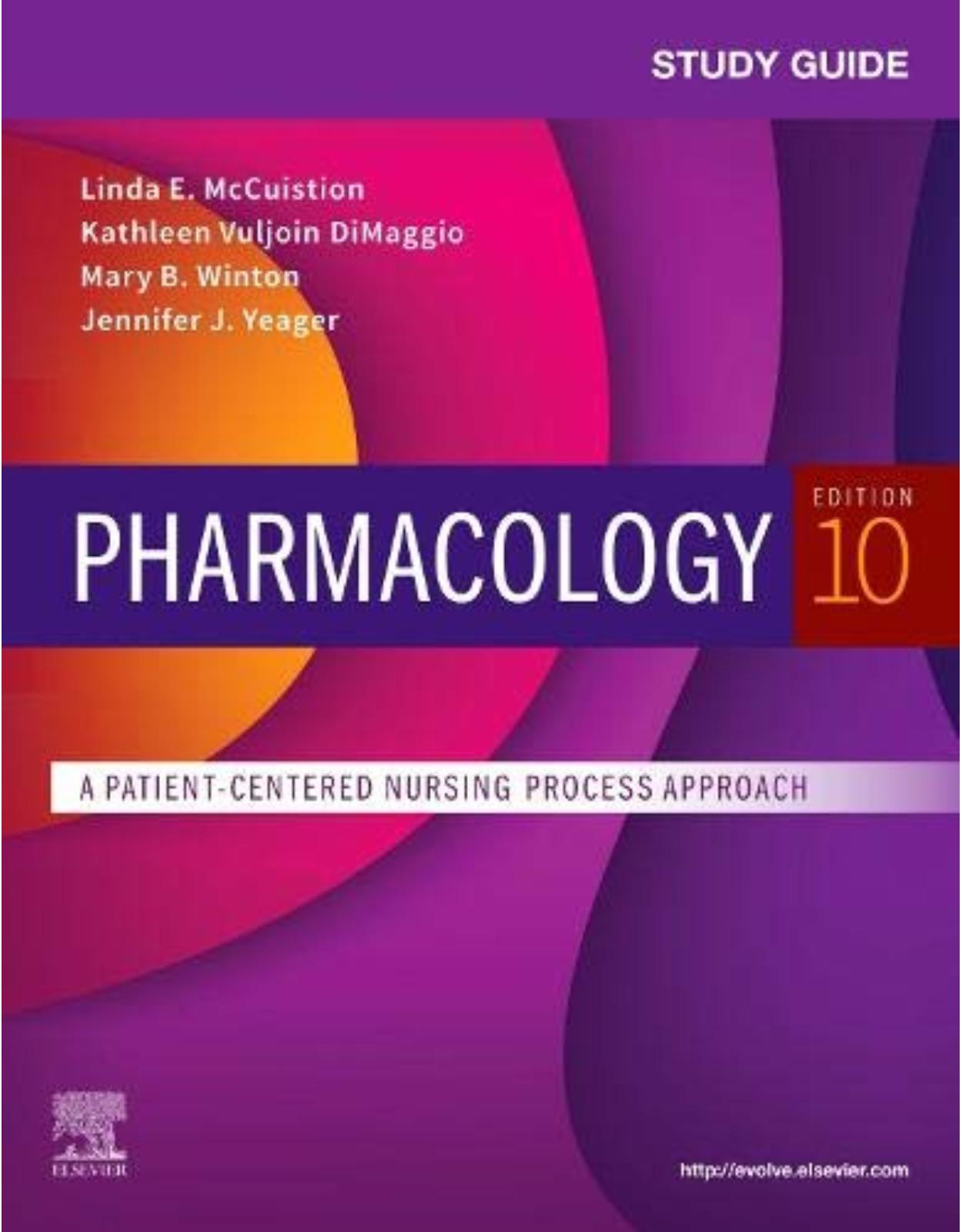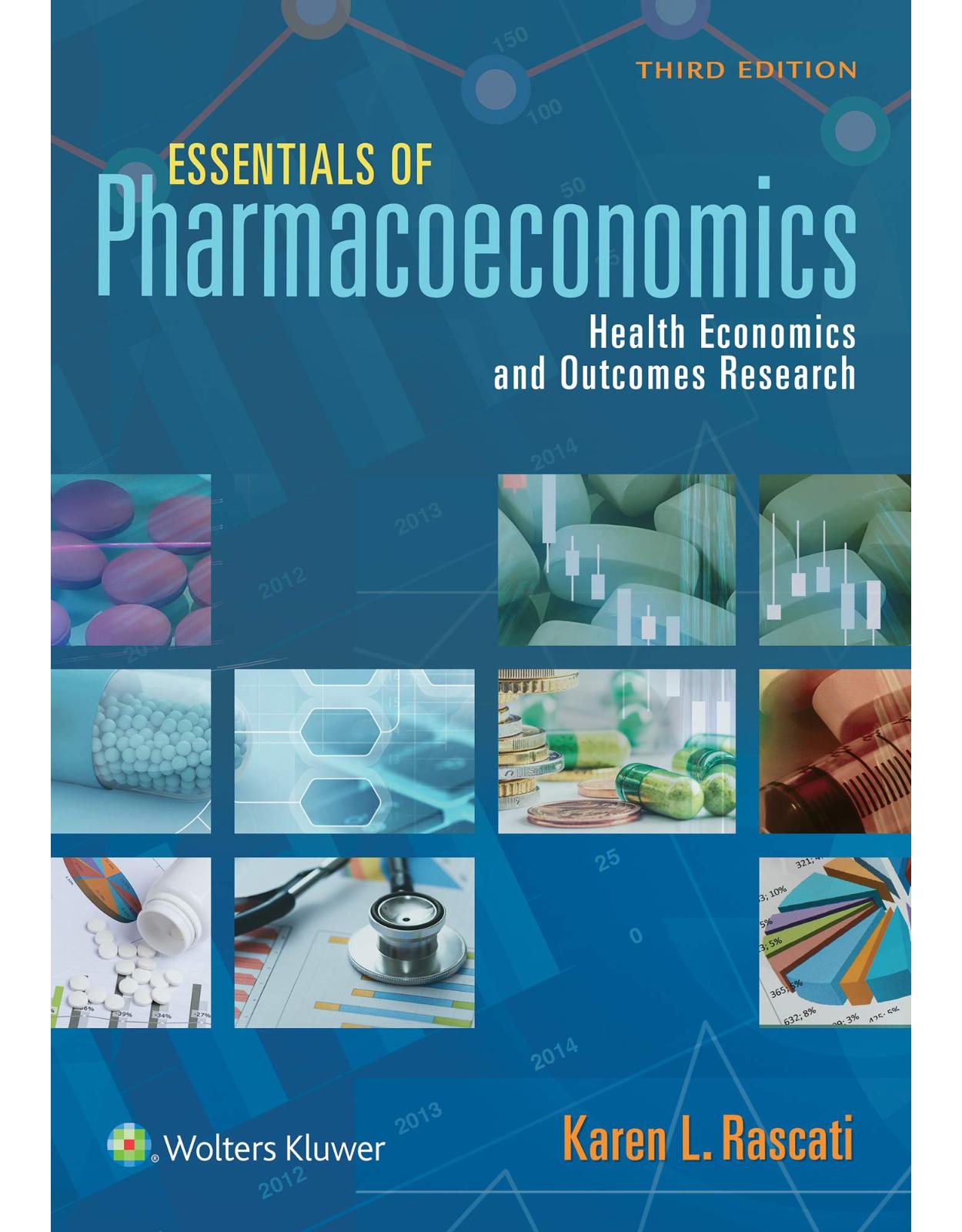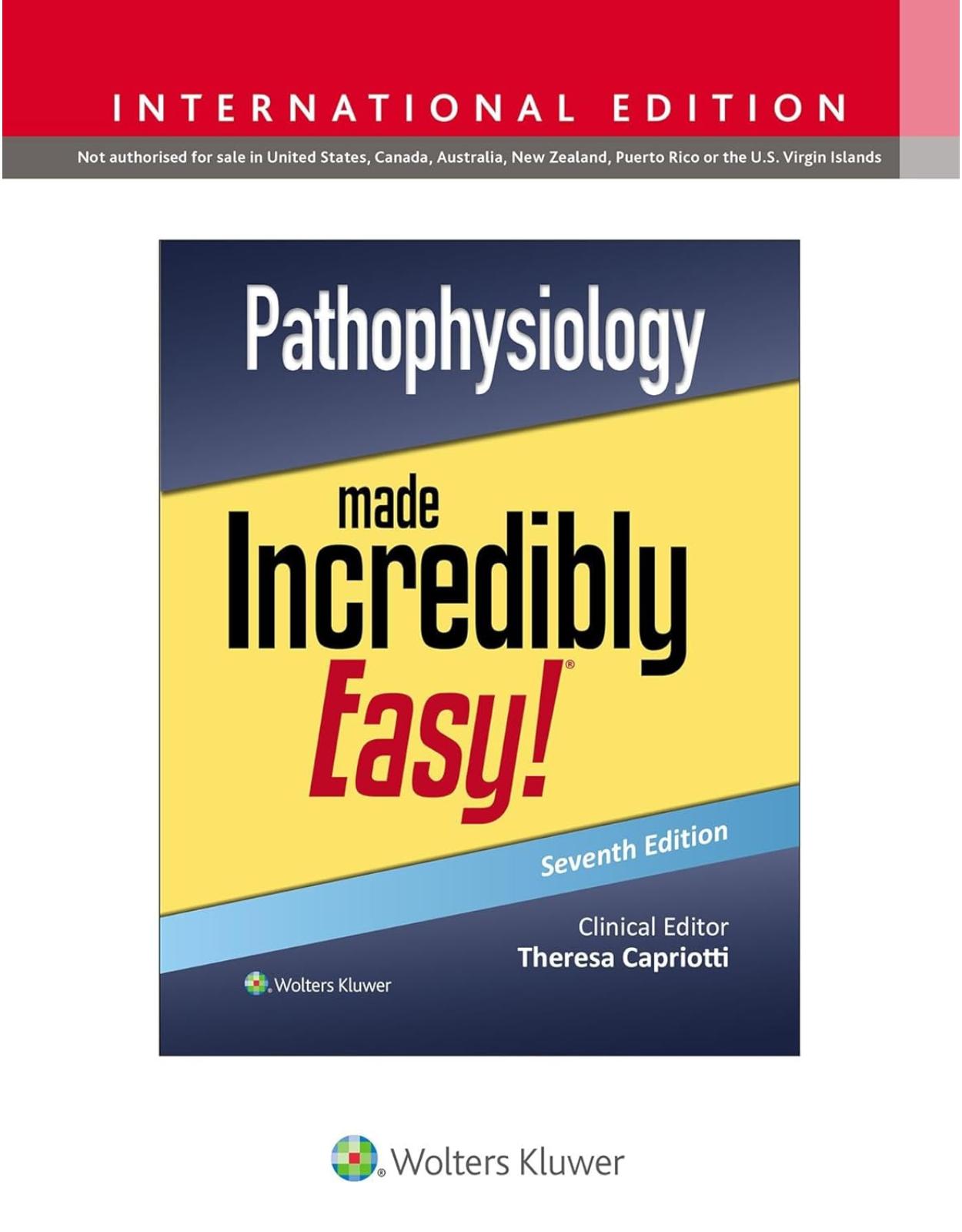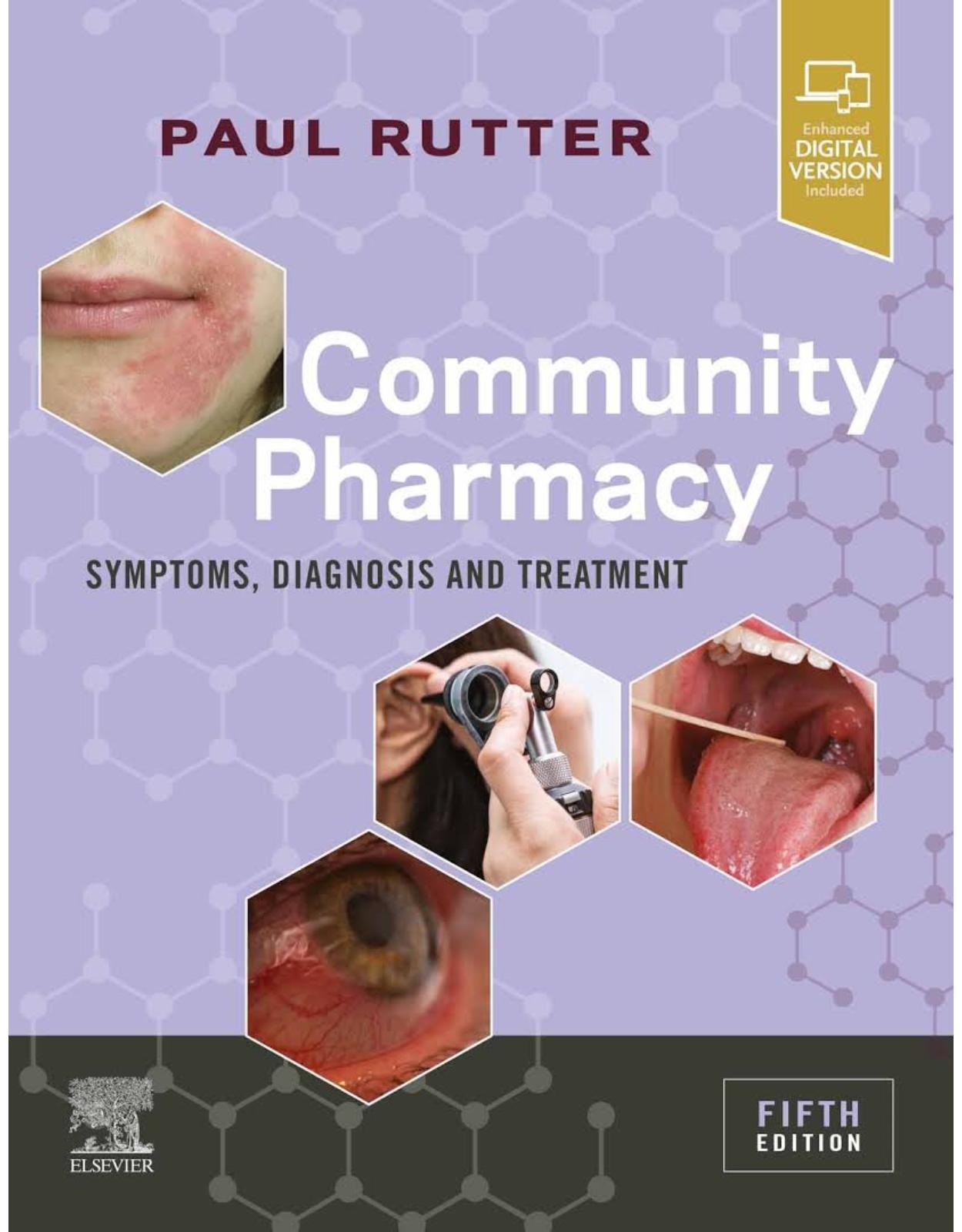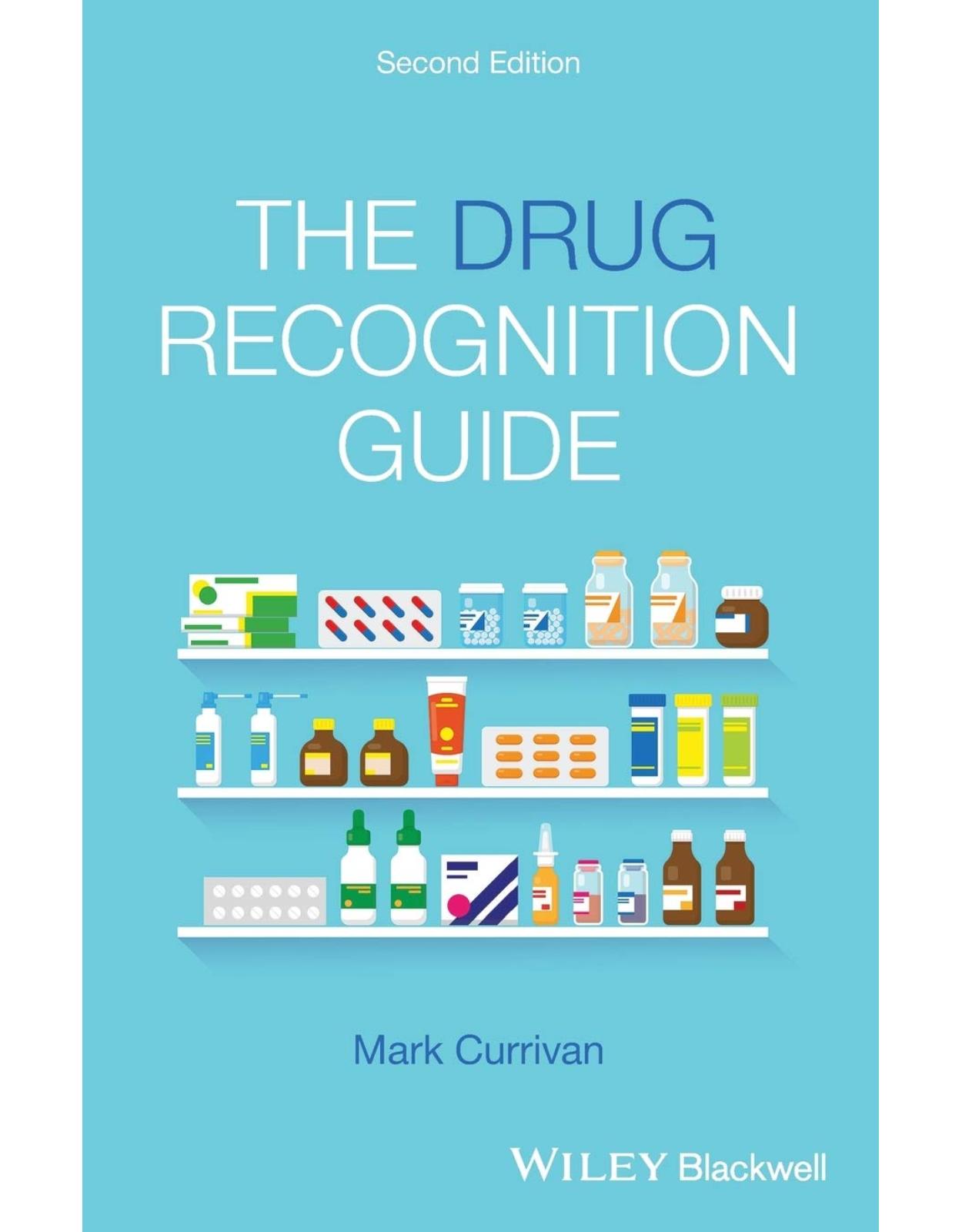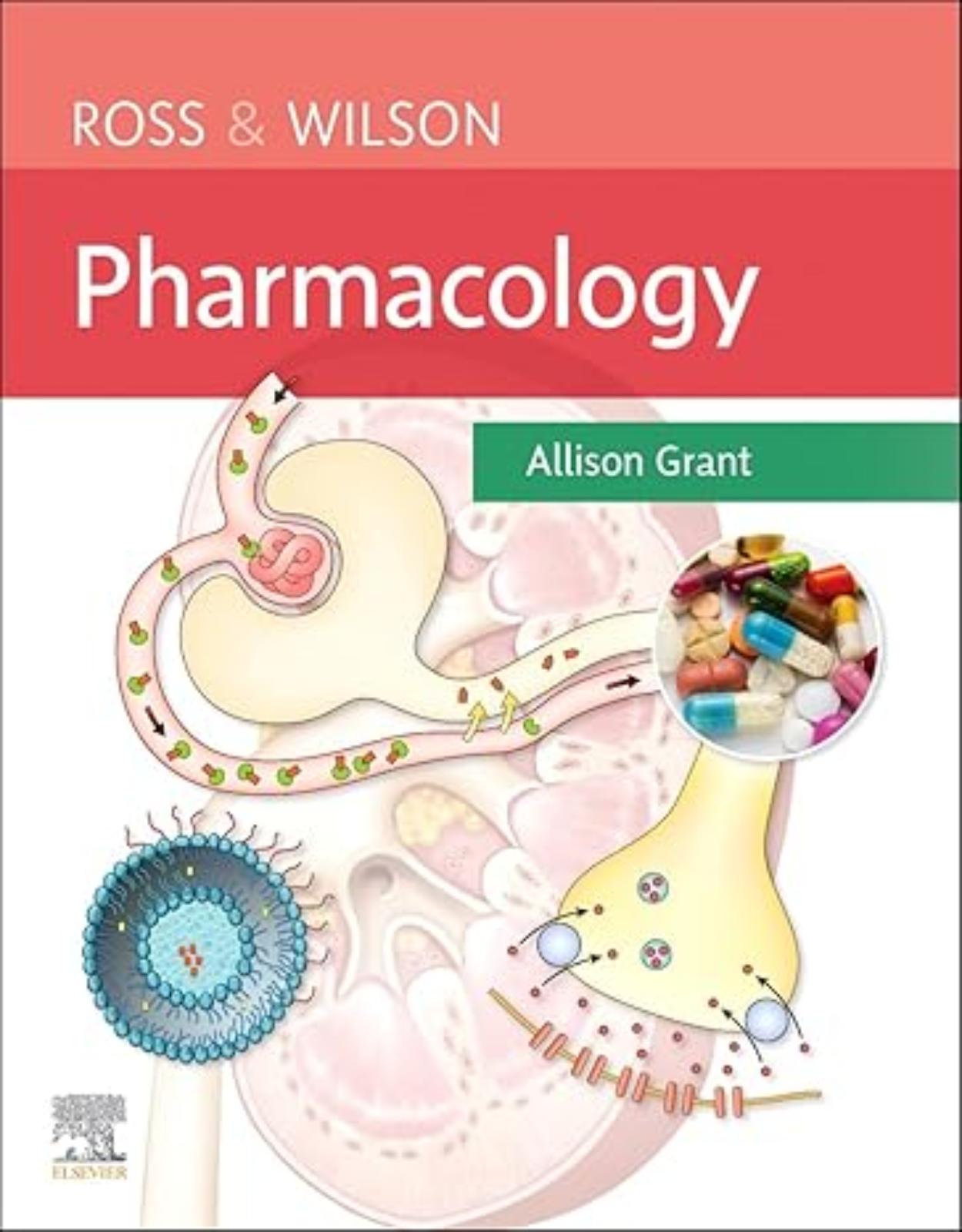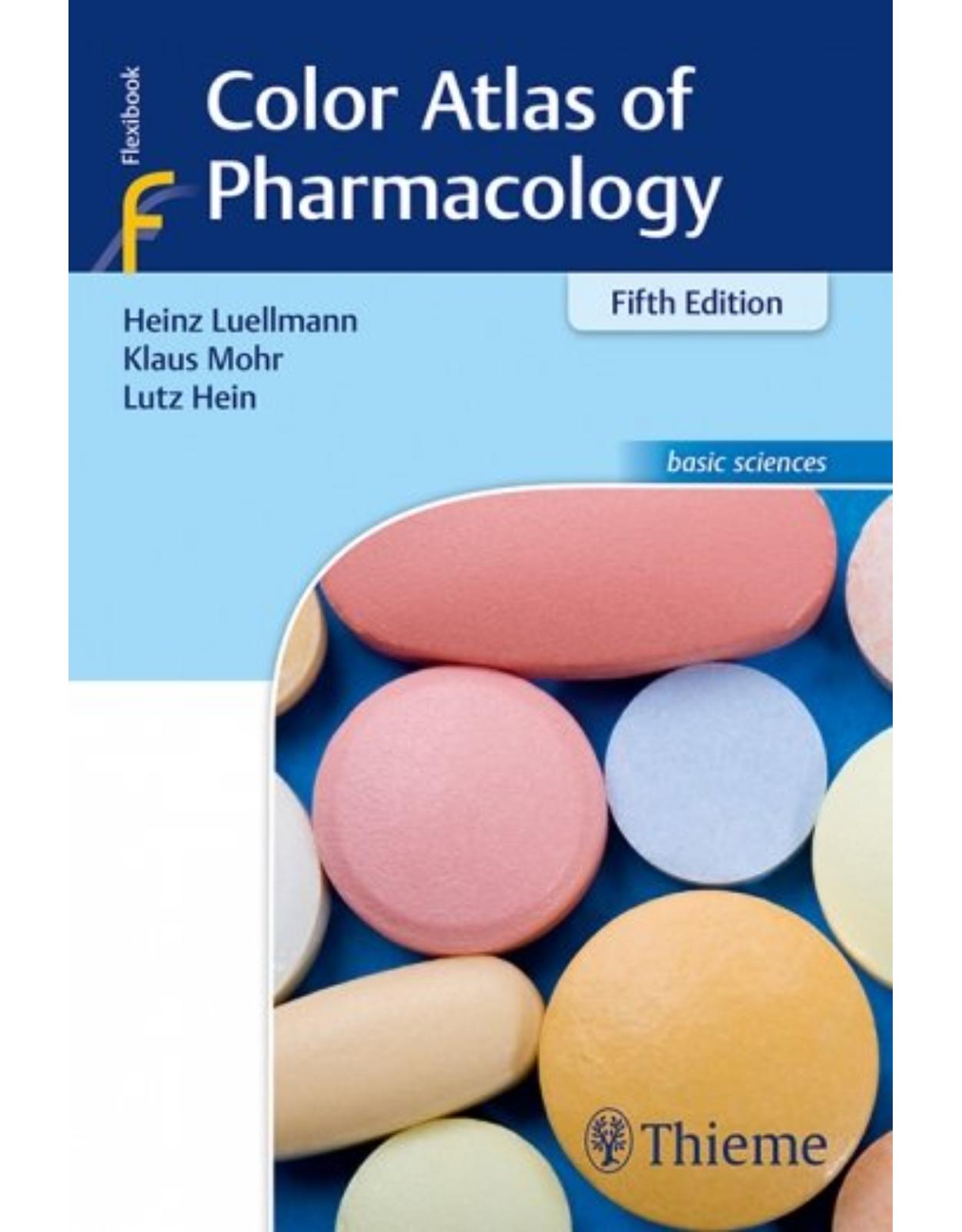
Color Atlas of Pharmacology
Livrare gratis la comenzi peste 500 RON. Pentru celelalte comenzi livrarea este 20 RON.
Disponibilitate: La comanda in aproximativ 4 saptamani
Editura: Thieme
Limba: Engleza
Nr. pagini: 416
Coperta: Paperback
Dimensiuni: 12.7 x 1.9 x 18.4 cm
An aparitie: 2017
Description:
The Fifth Edition of Luellmann's Color Atlas of Pharmacology has been extensively revised to include all recent advances and new drugs, and the illustrations have been optimized and updated. Each two-page spread presents concise text on the left complemented by detailed full-color illustrations on the right to help users quickly digest important facts and concepts.
Color-coded sections provide readers with a helpful framework with which to approach the latest developments in pharmacology.
Part 1, General Pharmacology, explains basic aspects, such as drug absorption, distribution, and elimination, along with the molecular mechanisms of drug actions
Part 2, Systems Pharmacology, presents the different groups of drugs, emphasizing their functional and therapeutic aspects
Part 3, Therapy of Selected Diseases, provides all the relevant information regarding the pharmacological treatment of a large number of conditions.
Key features:
User-friendly format ideal for study and review, self-assessment, and quick reference
Completely revised and updated, with 174 color plates
New glossary of important and interesting pharmacological terms
Updated detailed drug indexes containing current information on drugs listed by both generic and brand names
The Fifth Edition of Color Atlas of Pharmacology is an essential study guide and reference for every student, nurse, and practicing physician needing to keep up to date with recent advances in the field.
Table of Contents:
General Pharmacology
1 History of Pharmacology
1.1 History of Pharmacology
2 Drug Sources
2.1 Drug and Active Principle
2.2 Plants as Sources of Effective Medicines
2.3 Human Proteins as Medicines
2.4 Drug Development
2.5 Drug Benefit Assessment
2.6 Congeneric Drugs and Name Diversity
3 Drug Administration
3.1 Oral Dosage Forms
3.2 Drug Administration by Inhalation
3.3 Dermatological Agents
3.4 Distribution in the Body
4 Cellular Sites of Action
4.1 Targets of Drug Action
5 Distribution in the Body
5.1 External Barriers of the Body
5.2 Blood–Tissue Barriers
5.3 Membrane Permeation
5.4 Drug Transporters
5.5 Distribution of Drugs
5.6 Binding of Drugs to Plasma Proteins
6 Drug Elimination
6.1 The Liver as an Excretory Organ
6.2 Biotransformation of Drugs
6.3 Drug Metabolism by CYP
6.4 Enterohepatic Circulation
6.5 The Kidney as an Excretory Organ
6.6 Presystemic Elimination
7 Pharmacokinetics
7.1 Drug Concentration in the Body
7.2 Time Course of Drug Concentration
7.3 Time Course during Repeated Dosing
7.4 Accumulation
8 Quantification of Drug Action
8.1 Dose–Response Relationship
8.2 Concentration–Effect Relationship
8.3 Concentration–Binding Curves
9 Drug–Receptor Interaction
9.1 Types of Binding Forces
9.2 Agonists–Antagonists
9.3 Enantioselectivity of Drug Action
9.4 Receptor Types
9.5 G-Protein-coupled Receptors
9.6 Plasma Concentration and Effect
10 Adverse Drug Effects
10.1 Adverse Drug Effects: Causes
10.2 Drug Allergy
10.3 Cutaneous Reactions
10.4 Pregnancy and Lactation
10.5 Genetic Variation of Drug Effects
11 Drug-independent Effects
11.1 Placebo Therapy
Systems Pharmacology
12 Sympathetic Nervous System
12.1 Function of the Sympathetic System
12.2 Structure of the Sympathetic Nervous System
12.3 Adrenoceptor Subtypes and Catecholamine Actions
12.4 Sympathomimetics
12.5 Indirect Sympathomimetics
12.6 α-Sympathomimetics, α-Sympatholytics
12.7 β-Sympatholytics (β-blockers)
13 Parasympathetic Nervous System
13.1 Parasympathetic Functions
13.2 Cholinergic Synapse
13.3 Parasympathomimetics
13.4 Parasympatholytics
14 Biogenic Amines
14.1 Dopamine
14.2 Histamine
14.3 Serotonin
14.4 Substance P and Amino Acids
15 Vasodilators
15.1 Vasodilators—Overview
15.2 Organic Nitrates
15.3 Calcium Antagonists
16 Inhibitors of the Renin–Angiotensin–Aldosterone System
16.1 ACE Inhibitors
17 Drugs Acting on Smooth Muscle
17.1 Drugs Acting on Smooth Muscle
18 Cardiac Drugs
18.1 Cardiac Drugs—Overview
18.2 Cardiac Glycosides
18.3 Antiarrhythmic Drugs
19 Antianemic Agents
19.1 Treatment of Anemias
19.2 Iron Compounds
20 Antithrombotic Agents
20.1 Thrombosis Therapy
20.2 Vitamin K Antagonists and Vitamin K
20.3 Heparin
20.4 Fibrinolytics
20.5 Inhibitors of Platelet Aggregation
21 Plasma Volume Expanders
21.1 Plasma Volume Expanders
22 Drugs Used in Hyperlipoproteinemias
22.1 Lipid-lowering Agents
23 Diuretics
23.1 Diuretics—Overview
23.2 NaCl and Water Reabsorption in the Kidney
23.3 Diuretics of the Sulfonamide Type
23.4 Potassium-sparing Diuretics and Vasopressin
24 Water and Electrolyte Disorders
24.1 Water and Electrolyte Disorders
25 Gastrointestinal Tract
25.1 Treatment of Hyperacidity, Use of Laxatives
25.2 Antidiarrheal Agents
26 Drugs Affecting the Motor System
26.1 Motor System
26.2 Muscle Relaxants
27 Drugs for the Suppression of Pain (Analgesics)
27.1 Nociceptors and Pain Pathways
27.2 Eicosanoids
27.3 Antipyretic Analgesics
27.4 Local Anesthetics
27.5 Opioids
28 Drugs Acting on the Central Nervous System
28.1 General Anesthesia and General Anesthetic Drugs
28.2 Inhalational Anesthetics
28.3 Injectable Anesthetics
28.4 Anxiolytics
28.5 Pharmacokinetics of Benzodiazepines
28.6 Therapy of Depressive Illness
28.7 Therapy of Manic States
28.8 Therapy of Schizophrenia
29 Drugs Affecting the Endocrine System
29.1 Hypothalamic and Hypophyseal Hormones
29.2 Thyroid Hormone Therapy
29.3 Hyperthyroidism and Antithyroid Drugs
29.4 Glucocorticoid Therapy
29.5 Androgens, Anabolic Steroids, Antiandrogens
29.6 Follicular Growth and Ovulation
29.7 Oral Contraceptives
29.8 Antiestrogen and Antiprogestin Active Principles
29.9 Aromatase Inhibitors
29.10 Insulin Formulations
29.11 Treatment of Diabetes Mellitus
29.12 Type II Diabetes Mellitus
29.13 Oral Antidiabetic Drugs
29.14 Maintaining Calcium Homeostasis
30 Antibacterial Drugs
30.1 Drugs for Treating Bacterial Infections
30.2 Inhibitors of Cell Wall Synthesis
30.3 Pore Formers and Inhibitors of THF Synthesis
30.4 Inhibitors of DNA Function
30.5 Inhibitors of Protein Synthesis
30.6 Drugs for Treating Mycobacterial Infections
31 Antifungal Drugs
31.1 Drugs Used in the Treatment of Fungal Infections
32 Antiviral Drugs
32.1 Pharmacotherapy of Viral Infections
32.2 Drugs for the Treatment of HIV
33 Antiparasitic Drugs
33.1 Endo- and Ectoparasites
34 Tropical Diseases
34.1 Antimalarial Drugs
34.2 Other Tropical Diseases
35 Anticancer Drugs
35.1 Cytostatics
35.2 Interference with Cell Proliferation Signaling Pathways
35.3 Special Antineoplastic Drug Actions
36 Immune Modulators
36.1 Inhibition of Immune Responses
36.2 Calcineurin Inhibitors, Sirolimus
37 Antidotes
37.1 Antidotes and Treatment of Poisoning
38 “Recreational” Drugs
38.1 Psychotomimetics
38.2 Tobacco and Nicotine
38.3 Consequences of Tobacco Smoking
38.4 Alcohol Abuse
Therapy of Selected Diseases
39 Cardiovascular Diseases
39.1 Hypertension
39.2 Angina Pectoris
39.3 Antianginal Drugs
39.4 Acute Coronary syndrome—Myocardial Infarction
39.5 Congestive Heart Failure
39.6 Septic Shock
40 Neurological Diseases
40.1 Parkinson Disease
40.2 Epilepsy
40.3 Migraine
40.4 Emesis
40.5 Sleep Disorders
41 Eye Diseases
41.1 Glaucoma
42 Bone Disorders
42.1 Osteoporosis
43 Metabolic Disorders
43.1 Gout
43.2 Obesity
44 Immune Disorders
44.1 Atopy and Antiallergic Therapy
44.2 Bronchial Asthma
44.3 COPD
44.4 Rheumatoid Arthritis
44.5 Chronic Inflammatory Bowel Disease
44.6 Multiple Sclerosis
Further Reading
45 Further Reading
Glossary
46 Glossary
Drug Index
47 Drug Index
47.1 Antibodies
47.2 Kinase Inhibitors
47.3 Drug Names → Trade Names
47.4 Trade Names → Drug Names
Abbreviations
48 Abbreviations
Subject Index
| An aparitie | 2017 |
| Autor | Heinz Luellmann, Klaus Mohr, Lutz Hein |
| Dimensiuni | 12.7 x 1.9 x 18.4 cm |
| Editura | Thieme |
| Format | Paperback |
| ISBN | 9783132410657 |
| Limba | Engleza |
| Nr pag | 416 |


